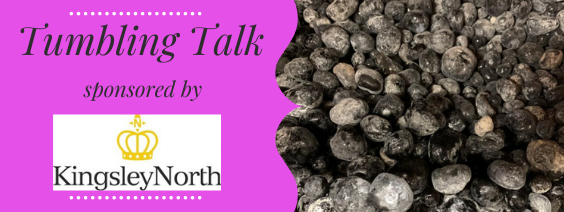
Editor’s Note: This timeless article is a flashback from the Rock & Gem archive.
By Lee Wallace
Many years ago, in what is now our Western States, there were violent upheavals within the earth. Magma boiled and seethed below the surface and, in some areas, forced its way upward to spill out of volcanoes and fissures. Any of the liquid magma that reached the surface is called lava, and lava that cooled so quickly that it did not have time to crystalize is called “obsidian,” or volcanic glass.
In weathering, especially where water got into cracks or crevices, this natural glass contracted and fractured into curved scales, much like the layers in pearls. This new rock, called “perlite,” erodes away, leaving rounded black nodules of the original obsidian — Apache Tears — to become a joy or plague to the rockhound who tries to polish them in a tumbler. The proper name for these stones is merekanite, but they frequently are called other even less-attractive names before they are successfully polished.
Characteristics of Apache Tears
Left in place, all of the obsidian in any deposit would slowly weather into perlite. So, relatively speaking, there is no old obsidian, although it may age the rockhound who works with it. This does not imply that the polished Apache Tear, worn on a necklace, will crumble and fall on the toes of the wearer. Obsidian, like any glass, just is not stable. However, the process of breakdown takes many, many years, so you will be safe wearing them. Most people who are unacquainted with Apache Tears are amazed to learn that light can be viewed through them. This is not due to the minerals involved as much as it is the structure. Obsidian is actually the non-crystalline equivalent of granite, which in turn is the coarse-grained equivalent of rhyolite. The chemical and mineral compositions are the same.

Kingsley North, www.kingsleynorth.com
Within the U.S., Apace Tears are often found in the West, less so east of the Mississippi, unless found in the back lots of disgruntled hobbyists who tried in vain to turn them into lovely, high-polished gemstones. While we had seen beautifully polished Apache Tears, our results were often like frosted concord grapes — all dark and sugary. So, we read a bit and tried again, only to fail again. So, we tried the methods of various others who reportedly “had the answer.” However, nothing seems to work, so by careful questioning and sheer tenacity, plus some thought of our own, we figured it out. No secret ingredients, no holds barred.
Steps for Tumbling Apache Tears
Just keep in mind that you are handling glass with a Mohs hardness of about 5½. Do not attempt to tumble it with anything harder, except in the first rough grind to smooth edges. Here are the steps we followed:
1. Place Apache Tears of various dimensions with other agates, a half-to-half ratio, with one pound of 90 grit to 10 pounds of rock, in the tumbler barrel. Water is added, and this tumbled for a month.
2. The stones are washed and Apache Tears are separated from the agate. The Tears are then tumbled for two weeks with one pound of 220 grit for each 10 pounds of Tears. Add about a cup and a half of leather bits, and water to full.

Available at Kingsley North, www.kingsleynorth.com
3. Again the Apache Tears are washed, and separated from leather bits. Tumble for two more weeks with one pound of 600 grit to 10 pounds of Tears. Add about a cup and a half of clean leather bits, and water to full.
4. Switch to a vibrating tumbler. Wash the Apache Tears and remove leather. Place Tears in a four-pound hopper with on tablespoon of Tripoli and about a half to three-fourths of a cup of clean leather bits, and enough water to make a gravy-like slurry.
**At this point you may be asking how to put 10 pounds of Apache Tears in a four-pound hopper – but a box will hold the excess to process later.
5. Wash the Tears again, remove the leather bits, and tumble for one week more with one tablespoon of cerium oxide with one-half to three-fourths cup of clean leather bits, again adding water to make a gravy-like slurry.
6. Wash the Tears another time, remove the bits, and tumble for about two hours with one-half cup of clean leather bits, and about a half-tablespoon of detergent.
The results are highly polished glassy Apache Tears.
Editor’s Note: You can find all of the supplies and equipment discussed and shown in this article at the Kingsley North website >>>
If you enjoyed what you’ve read here we invite you to consider signing up for the FREE Rock & Gem weekly newsletter. Learn more>>>
In addition, we invite you to consider subscribing to Rock & Gem magazine. The cost for a one-year U.S. subscription (12 issues) is $29.95. Learn more >>>















